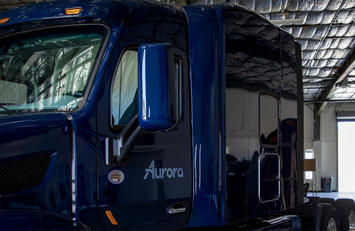
One of the victims of COVID-19 may be robotaxis and with them one path towards a future of autonomous vehicles. Before the pandemic, there were two views of how driverless cars would take over the road.
One model, which I’ll call the Waymo model but it was also endorsed by Uber, General Motors (through its Cruise subsidiary), and Ford, was that robotaxis would replace privately owned automobiles, especially in the urban areas that house 80 percent of the nation’s population. These robotaxis would rely heavily on maps, and would only work in areas that had been mapped. Since many people would be unwilling to buy a car that could only go on some roads, Waymo and other software companies planned to put them in robotaxi or ride-hailing services, at least until the entire country was mapped.
The other model, which I’ll call the Tesla model but it was also endorsed by Volvo and perhaps Volkswagen, continued to rely on private ownership of automobiles. Instead of depending on precise maps, the autonomous vehicles would rely mainly on their own sensors, which would enable them to go anywhere, even potentially off-road. To get to that point, Tesla and other companies planned to incrementally improve the on-board electronics until the computers could completely take over driving.
Before the pandemic, most of the buzz I heard in the high-tech sector was that the robotaxi model would prevail. One study even predicted that, by 2030, 95 percent of all travel would be by shared rather than privately owned vehicles. Many driverless car experts were scornful of Tesla, saying that its autopilot mode wasn’t as safe as it needed to be.
I strongly suspect that a lot of the preference towards robotaxis was wishful thinking. Decades of anti-auto propaganda has stimulated a lot of knee-jerk animosity towards private vehicles. Somehow, use of shared vehicles was considered more virtuous than ownership of a vehicle that would remain motionless for 90 percent of its life. Some people claimed that shared vehicles would cost far less than private vehicles, but considering that the average cost of owning a car in the United States is about 40 cents a mile while the marginal cost of driving a car you already own is only about 15 cents a mile, I doubt that owners of shared vehicle fleets could get their average costs down to the marginal costs of vehicle owners.
In any case, one result of the pandemic is that talk of robotaxis has at least temporarily receded. Use of shared vehicles, whether airlines, public transit, or Uber, is down by 60 to 70 percent. Use of private vehicles remains at 90 percent of pre-pandemic levels. Companies that were focused on driverless ride-hailing are now talking about driverless delivery vehicles for on-line shoppers instead.
Read the rest of this piece at The Antiplanner.
Randal O'Toole (rot@ti.org) is a senior fellow with the Cato Institute analyzing land-use and transportation policies and the author of American Nightmare: How Government Undermines the Dream of Homeownership.
Photo credit: Aurora












